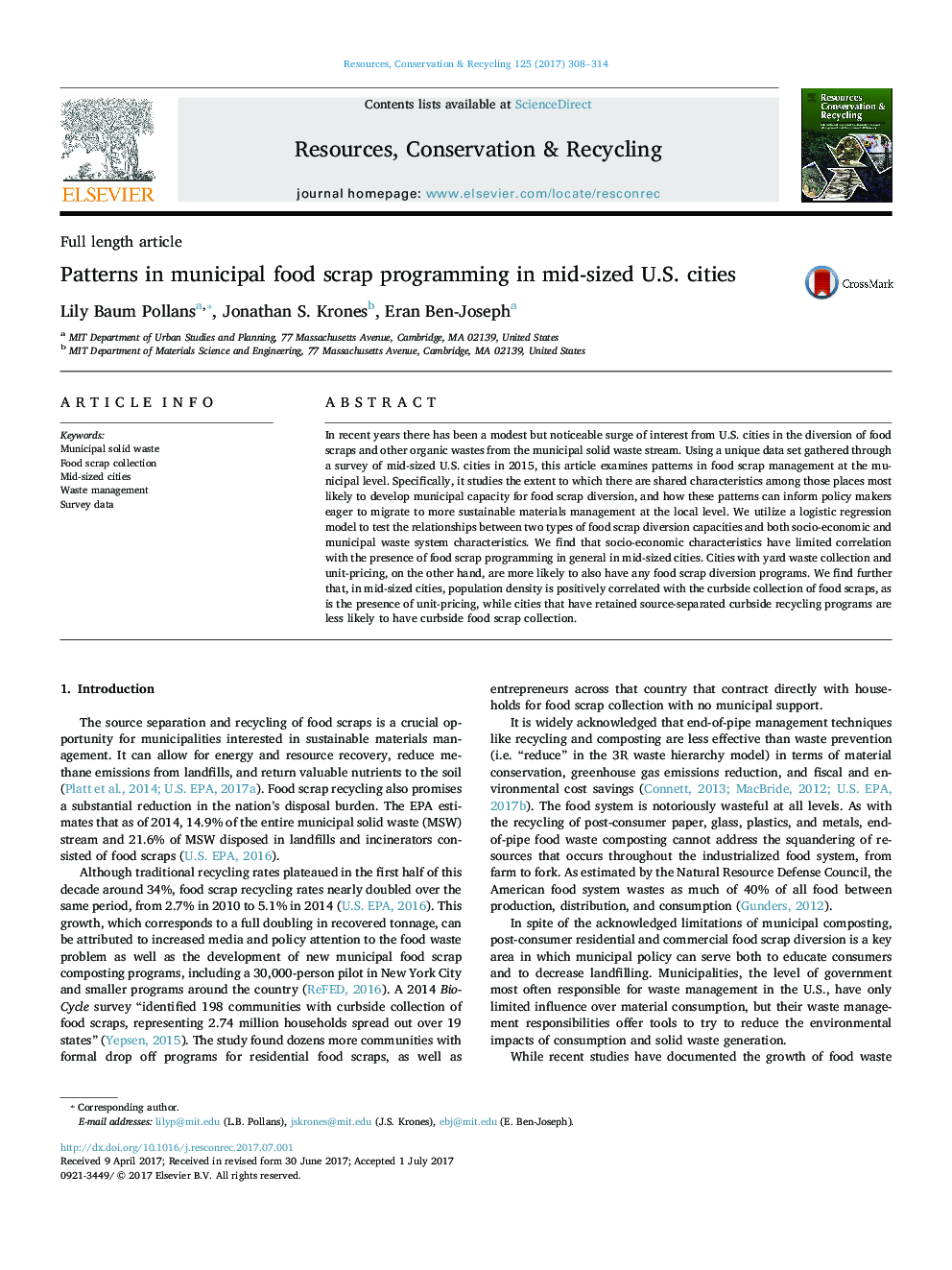| Article ID | Journal | Published Year | Pages | File Type |
|---|---|---|---|---|
| 5118670 | Resources, Conservation and Recycling | 2017 | 7 Pages |
Abstract
In recent years there has been a modest but noticeable surge of interest from U.S. cities in the diversion of food scraps and other organic wastes from the municipal solid waste stream. Using a unique data set gathered through a survey of mid-sized U.S. cities in 2015, this article examines patterns in food scrap management at the municipal level. Specifically, it studies the extent to which there are shared characteristics among those places most likely to develop municipal capacity for food scrap diversion, and how these patterns can inform policy makers eager to migrate to more sustainable materials management at the local level. We utilize a logistic regression model to test the relationships between two types of food scrap diversion capacities and both socio-economic and municipal waste system characteristics. We find that socio-economic characteristics have limited correlation with the presence of food scrap programming in general in mid-sized cities. Cities with yard waste collection and unit-pricing, on the other hand, are more likely to also have any food scrap diversion programs. We find further that, in mid-sized cities, population density is positively correlated with the curbside collection of food scraps, as is the presence of unit-pricing, while cities that have retained source-separated curbside recycling programs are less likely to have curbside food scrap collection.
Related Topics
Physical Sciences and Engineering
Energy
Renewable Energy, Sustainability and the Environment
Authors
Lily Baum Pollans, Jonathan S. Krones, Eran Ben-Joseph,
